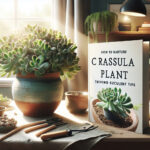Introduction to Crassula Watering Needs
Imagine a Crassula, with its plump leaves like little reservoirs, basking in the glow of a perfectly sunny spot. Whether perched on a windowsill or gracing your outdoor garden, the vitality of these stout succulents depends heavily on mastering one essential skill: watering. One might say, the health of your Crassula hinges on the harmony between hydration and restraint. Let us wade into the world of Crassula care, where the timing of a simple watering can make or break these desert dwellers.
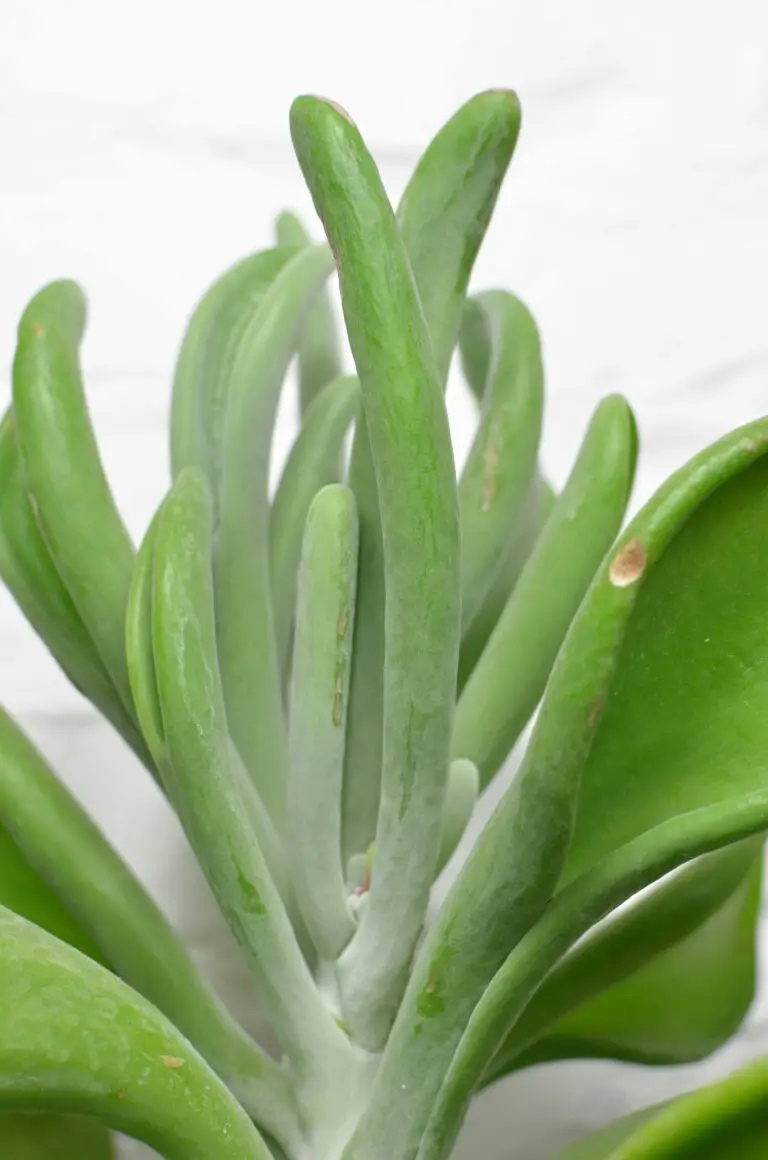
Arming yourself with knowledge about the proper care techniques can turn the seemingly mundane act of watering into a strategic endeavor. Picture this: the outdoor Crassula soaking up the summer sun vs. its indoor cousin nestled in climate-controlled comfort. They share the same DNA, yet their watering needs are worlds apart. Like any living creature, Crassulas whisper their needs through subtle cues—learning to read them is key. Think of that sun-drenched Crassula flexing its leaves, and the softening, downward droop when its thirst needs quenching.
Drinking habits of Crassulas shift with the seasons. While the summer beckons frequent watering, the chill of winter is a time for slumber and less water. In this dynamic dance with nature, a pattern emerges, one of attunement and adaptability—where the giving of water becomes intuitive, a response to the life cycle of your resilient, yet delicate, Crassula companions.
Understanding Crassula’s Succulent Nature
Imagine a plant that thrives on neglect, a real ‘set-it-and-forget-it’ trooper. That’s Crassula for you – the succulent superstar! These plants are not just sitting pretty; they’re packed with superpowers for survival. But what turns a Crassula into such a hardy homie? Let’s dive into the succulent specifics.
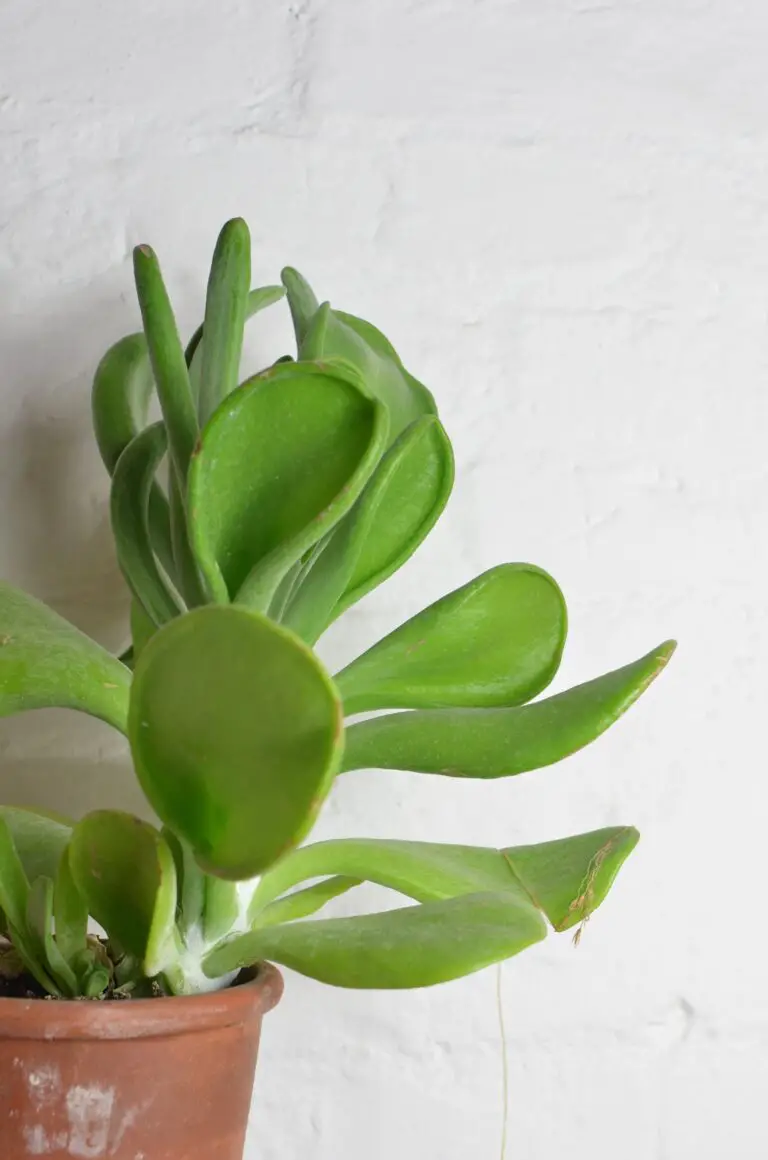
At the heart of Crassula’s rugged charm is its ability to hoard water like a desert camel. Its chubby leaves aren’t just cute; they’re storage units, brimming with life-sustaining moisture. This means you can forget about frequent watering – these plants play the long game, making the most of every precious droplet.
Think of it like a self-sufficient space station. In the middle of your living room, the Crassula is on its own little orbit, cleverly conserving resources. It’s all thanks to its waxy, glossy leaves that seal the deal – literally – by locking in hydration and reducing evaporation. It’s this nifty trick that lets your green buddy stand firm, even when the going gets tough.
Understanding when to abandon the watering can and let the Crassula be its independent self is critical. It’s like knowing when to let your kids ride their bikes without training wheels – terrifying, but a necessary step in growth. Fear not, though! By reading the succulent signs and signals, you can nail the timing and watch your Crassula thrive.
Why It’s All About Balance
Don’t be fooled into thinking you can drench your Crassula and forget about it for a month. There’s a fine line between self-sufficiency and neglect. These succulents need a watering schedule that’s more like a well-edited podcast – no fluff, just regular, measured content to keep it going strong.
Remember, the Crassula isn’t just surviving; it’s poised to flourish, and that comes with understanding its unique needs. It’s all about balance, ensuring that it gets the TLC it deserves without going overboard. So the next time you pass by your leafy companion, give it a nod of respect – it’s quietly conquering the world, one drop at a time.
Key Indicators for Watering Your Crassula
Unlocking the secret to a thriving Crassula begins beneath the surface. Imagine the arid, sun-soaked terrains of Madagascar, where the Crassula naturally thrives, coaxing you into the realm of “just right” watering. It’s not about sticking to a strict schedule; it’s about observing and responding to your plant’s needs. Let’s dive into the telltale signs that beckon you to quench your Crassula’s thirst.
Tap into the Soil Story
Channel your inner detective and investigate the soil’s dryness. A simple touch test tells you volumes; if the top inch feels like a deserted drought landscape, it’s time to reach for the watering can. This parched state is the Crassula’s unspoken plea for moisture—a clear cue to hydrate but with a mindfulness to avoid drenching despair.

Reading the Leaves: A Tale of Textures
Like seasoned survivalists, Crassula leaves adapt their texture to convey their water wishes. Lush and plump leaves speak of contentment, while soft, flexible ones whisper an SOS for sustenance. Watch for the subtle shrinkage and wrinkling—visual metaphors for the plant’s reserve tank hitting low.
The Overall Look: Crassula’s Charm
Finally, step back and gaze at the big picture. A well-watered Crassula stands sturdy and spirited, its glossy foliage flaunting vitality. Conversely, a long-overdue drink reflects in a lethargic, lackluster appearance—an eloquent expression of the plant’s yearning for your attentive care.
Proper watering fosters the art of resilience in Crassula, transforming your succulent into a testament of tenacity. For further insights on nurturing these beauties, explore these expert care tips and take pride in curating a spectacle of succulent success.
Seasonal Watering Strategies for Crassula
Hey green thumbs, turn your Crassula into a thirst-quenching champion with some savvy seasonal watering insights! As the earth pirouettes on its axis, your Crassula’s H2O needs sashay along with the changing stages of the celestial dance. Let’s unravel the watering whims of this succulent as it waltzes through the seasons.
Dive into the vibrancy of spring and summer, when Crassula plants luxuriate in their growing season. These verdant beauties are hard at work, forging new leaves and stretching out their roots. It’s showtime and your Crassula is the star of the garden ballet! Provide a steady rhythm of water to the beat of the brighter, longer days. Imagine a refreshing April shower, that’s the kind of quenching your Crassula craves.
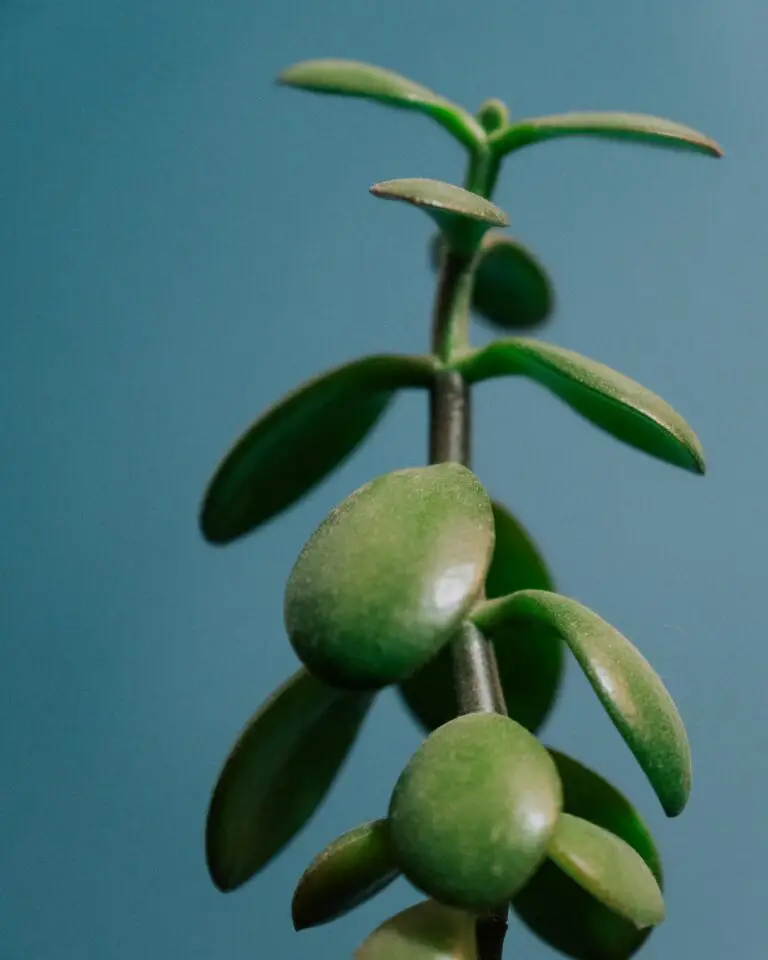
Conversely, winter is the period when our plump-leafed friends hunker down. This isn’t the time for a water fest. Instead, it’s the siesta season – a period of dormancy. Imagine your Crassula wrapped in a snuggly blanket, dreaming of wetter days. During these chilly months, water becomes sparse, mere sips to sustain those dreams until the sun coaxes the succulent from its slumber.
Looking after a Crassula? It’s all about tuning into the ebb and flow of nature’s moods. Whether you’re a seasoned succulent whisperer or a budding novice, monitoring the moisture needs as the seasons shift is akin to choreographing a delicate dance that, when perfected, leads to a long-lasting, leafy partnership.
Fall, not to be overlooked, is the dress rehearsal for winter’s rest. It’s a transitional period where the tempo of watering gradually slows. Your Crassula is easing into rest mode, so it’s time to start easing up on the watering can cadence.
Seasons will come and go, but with these pro tips, your Crassula will persist through the annual performance, standing ovation after ovation. Just remember, it’s not about sticking rigidly to a schedule. It’s about feeling the rhythm of your plant’s life cycle and joining in harmony with the symphony of the seasons.
The Role of Soil and Pot Type in Watering
Let’s talk dirt, or rather, the special mix your Crassula needs to thrive! Choosing the right soil and pot type isn’t just a trivial detail; it’s a game-changer for maintaining that perfect moisture level. Succulents like Crassula store water in their leaves and require a delicate balance of hydration without the risk of root rot. A gritty, well-draining soil mix becomes your best ally. Our aim? To mimic the natural, rocky environment these hardy plants call home.
Imagine a pot with poor drainage—like giving your Crassula a bath with no way to drain the tub! Excess water lingers, and those plump, healthy leaves begin to wither from root rot. It’s the stuff of a plant parent’s nightmare! Now flip the script and choose a terracotta pot with a drainage hole at the bottom, combined with a succulent-friendly soil mix. Suddenly, you’re the Crassula whisperer. Water flows through easily, and your plant’s roots are as snug as a bug in a rug—except, the bug’s thriving in the perfect soil structure.
Here’s a tip straight from the plant-savvy circles: mix in perlite, coarse sand, or pumice with your potting soil. This concoction boosts drainage and aeration, preventing water from overstaying its welcome. Every Crassula owner has their secret recipe, and finding yours can be a fun experiment. Whether you’re a fan of the classic ‘two-parts sand, one-part soil’ mix or you like to get fancy with volcanic rock, the goal is clear—create an environment where water comes and goes like guests at a good party, giving your Crassula the breathable home it deserves.
Remember, the pot type plays a supporting role in this botanical production. Material matters: porous terracotta or clay pots allow the soil to dry more evenly, unlike plastic or glazed containers that retain moisture. Watch your Crassula sail through the seasons when the soil and pot combo works in harmony like a well-conducted orchestra.
To see this dance between soil, pot, and watering in action, let’s take a visual detour. Check out this insightful video on how to optimize your Crassula’s watering routine by selecting the ideal soil mix and pot:
Keep in mind that your local climate also plays a significant role. In humid areas, your Crassula might need less frequent watering compared to the thirstier needs in a drier climate. Regardless, the winning combination of the right soil and pot type sets you on the path to Crassula success. Water wisely, tailor your care, and watch your green companion flourish!
Mastering the Watering Technique
The key to a thriving Crassula lies in understanding its watering needs. Your Crassula isn’t just another plant; it’s a unique succulent that craves care that mimics its natural arid habitat. Picture the rolling desert landscapes where the rain comes infrequently but in abundance. That’s the scene you’re aiming to replicate with the ‘soak and dry’ method. Let’s dive in and get your hands wet—figuratively, of course!
Step 1: Wait for the Dry Spell
Before you even reach for that watering can, make sure the soil is completely dry. Insert a finger into the soil near your Crassula plant. If it’s damp, hold off on watering. When the soil feels like a forgotten, dusty trail under a relentless sun, it’s time to quench your plant’s thirst.
Step 2: The Soaking Shower
Imagine a rare desert downpour. That’s the intensity your Crassula requires. Water generously at the base until you see water seeping through the drainage holes. This simulates a natural soaking, encouraging deep root growth and a robust plant structure.
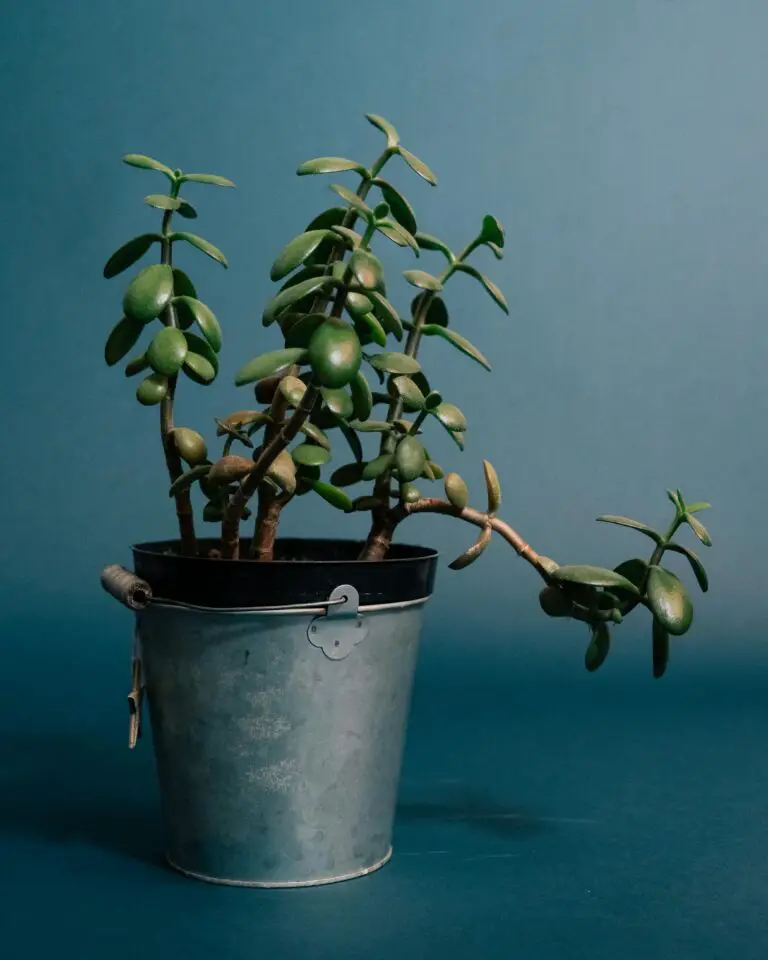
Step 3: Dodge the Common Pitfalls
While enthusiasm is admirable, over-watering leads you down a slippery slope to root rot. If you’re greeting your Crassula with a drink as regularly as you sip your morning coffee, it’s time to step back. Likewise, resist the temptation to mist. While it gives a momentary illusion of hydration, it’s the root zone that truly matters. Keep that watering can directed at the soil.
Step 4: Repeat with Patience
After the soak, your Crassula’s soil should stay dry for a while—think of a desert sanctuary after the rain, basking in sunlight, drying out before the next downpour. Monitor the soil’s moisture level, and only perform the watering ritual again when it has fully dried out. With this patient approach, your Crassula will reward you by flourishing with vigor.
Remember, your Crassula isn’t just surviving; it’s living. Each drop of water you provide is a step towards its lush, green success. Embrace the ‘soak and dry’ method, and watch your succulent thrive, basking in the glory of its perfectly mastered watering regime.
Dealing with Common Watering Issues
Crassula, those plump and cheerful succulents, bring joy to any space, but their watering needs can sometimes be a puzzle wrapped in an enigma. Too much love in the form of water, and you’ll find yourself with a mushy, unhappy plant. Too stingy, and you’ll witness a withering beauty begging for a drop. Let’s dive into the common signs of trouble in paradise and chart a course towards peaceful cohabitation with our water-wise friends.
Setting the Scene: Overwatered Overwhelm
Picturing an overwatered Crassula isn’t hard. Imagine walking into a room where the humidity hangs heavy, and you find your once sturdy succulent looking a bit droopy and discolored. It’s a classic case of overwatering, and the leaves might even be a bit squishy to the touch—like overripe fruit ready to burst. The soil feels wetter than a sponge long forgotten in the kitchen sink, and you know it’s time to take action.
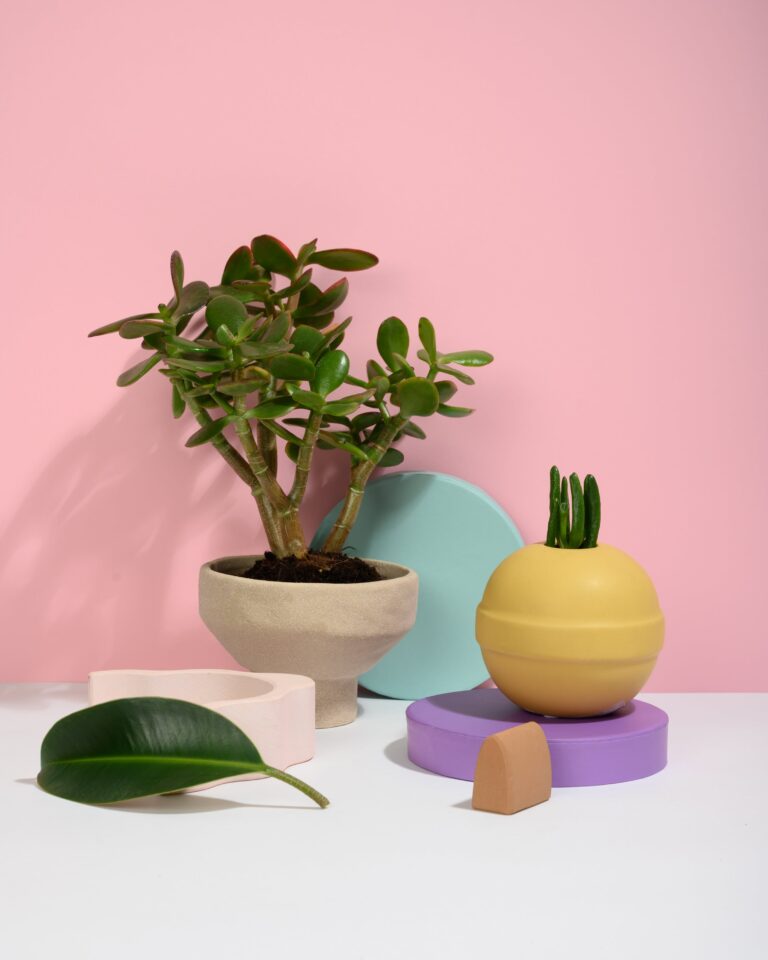
Underwatering: A Dry Tale
On the flip side, the underwatered Crassula tells another tale. This one’s about neglect that can creep up on even the most diligent plant parents. Picture the leaves, once plump and cheerful, now beginning to resemble raisins left out in the sun—a little wrinkled, a little sad. The soil is dry and pulls away from the edges of the pot, like a baked desert floor that hasn’t seen rain in seasons. It’s a stark contrast to the overwatered scenario, but just as fixable.
Rescuing Your Crassula: The Plan of Action
Whether you’re facing the plight of the drowned or the parched, the solution begins with understanding and ends with action. To start, adjust your watering schedule. Your Crassula’s comfort zone is a watering routine that allows the soil to dry out completely between hydration sessions. Get in tune with your plant’s needs—stick a finger in the soil, and if it’s dry a couple of inches down, it’s time to water. Always use a pot with drainage holes to avoid waterlogging.
If you’re nursing an overwatered Crassula, back off on the H2O and consider changing the soil to a fresh, well-draining mix. For the underwatered plant, reintroduce water slowly. Too much too fast, and you risk shocking your resilient friend. Think of it as a delicate dance, where patience leads.
Real-life cases have shown that persistence pays off. Take the story of Sarah, who once overwatered her beloved Crassula to the brink of collapse. By scaling back her watering routine and ensuring proper drainage, she managed to turn limp leaves into perky foliage once again. Then there’s Mike, who forgot his Crassula while on a month-long vacation. He returned to a sad sight, but with gradual watering, his plant bounced back with vigor.
In the end, these tales of recovery all highlight the remarkable resilience of the Crassula. With a bit of understanding, the right approach, and a refusal to give up on your green companion, you’ll find that sweet spot where both you and your succulent can thrive, without the sogginess or the drought.
Crassula Watering FAQs
Join us in the green journey of finding that perfect balance of moisture for your serene Crassulas. Isn’t it puzzling, looking at your sturdy little green friend and wondering, “Have I watered you enough or too much?” Well, let’s dive into the ripple of questions that fellow Crassula caretakers like you are brimming with!
How often should I water my Crassula?
Imagine this: the Sahara Desert gets a rainfall — it’s a rare event, and so is the proper watering schedule for your Crassula. These succulents crave a “soak and dry” method. Wait until the soil is completely parched before you drench your plant’s roots with water. It’s a bit like a camel stocking up for a long trek across the dunes!

What’s the best way to tell if my Crassula needs water?
Put on your detective hat and observe. Gently press the soil with your finger – if it feels as dry as a witty joke, it’s time to water. Don’t rely on a routine; Crassulas prefer their own watering rhythm that changes with temperatures and seasons.
Can I water my Crassula with tap water?
Would you drink from a stagnant pond? Probably not. And neither does your Crassula savor chlorine or heavy metals in tap water. If possible, collect rainwater or use filtered water. Your plant will reward you by flaunting its plump and happy leaves.
What happens if I overwater my Crassula?
Oops! If you accidentally treat your succulent to a waterlogged pot, it might sulk by dropping leaves or developing root rot. Imagine wearing wet socks — uncomfortable, right? Give your Crassula a chance to breathe and recover by holding back on H2O and ensuring good drainage.
What are the signs of an underwatered Crassula?
You wouldn’t want to be parched on a hot day, and your Crassula wouldn’t either. Watch for thin, wrinkly leaves as a cry for hydration. When your Crassula thirsts for a drink, it’s as dramatic as a dehydrated marathon runner crossing the finish line — give it that glorious gulp of water it’s yearning for.
Armed with this splash of knowledge, you’re now ready to navigate the tides of Crassula care. Remember, each plant has its own personality and water needs. Tune into your Crassula’s language, and soon, you’ll both be flourishing in the harmony of the succulent symphony.



